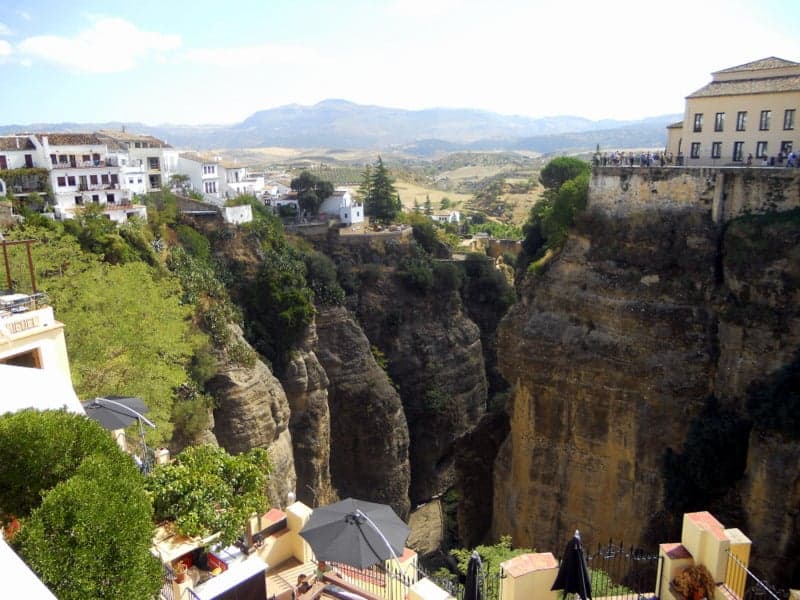Are you a boomer traveler who likes to visit isolated destinations? Have you wondered what it is like to visit one of the last bastians of the Cold War? In today’s guest post, Larissa and Michael Milne, publishers of Changes In Longitude, offer tips on how to travel to North Korea.

We’ve been to over 25 countries so far on our year-long around-the-world journey, but one has generated more questions than all the others combined: North Korea. Why would two Americans visit a country that is so isolated? As boomers we grew up with the Cold War, so we were curious to see firsthand its last outpost. If you are interested in going somewhere that truly is like no other place on Earth, North Korea should be on your boomer travel list.
Visiting the DPRK (Democratic People’s Republic of Korea, as it’s officially known) is not easy, but it is allowed by both the US and North Korean governments. Given the nature of the totalitarian state, that surprised us. Group tours through a DPRK-authorized agency are the only way to see the Hermit Kingdom, with entry through China, North Korea’s closest ally. We chose Koryo Tours, a Beijing-based outfit with the most experience touring the DPRK. Run by Nick Bonner, a British filmmaker who has made several documentaries about the country, Koryo has been leading tours to North Korea since 1993.
Our tour was a 5-day visit that included a trip to Pyongyang and the DMZ. Groups attend a pre-tour briefing the night before departure from Beijing that focuses on what to expect and how to behave in the DPRK. Anything our group did that broke the rules would reflect poorly on our North Korean guides and potentially cause future visitation restrictions.
The North Korean government is notoriously skittish about any information from the outside world, particularly as it relates to South Korea. This is a society where the people don’t have Internet access or a free media. Books, magazines or any information about North or South Korea are prohibited. Cell phones, computers and GPS devices are not allowed. They are confiscated upon entry and returned when leaving. Clothing with political slogans or flags of foreign countries (particularly South Korea and the USA) is taboo.
While we were allowed to bring cameras and encouraged to take pictures, the size of zoom lenses was limited. We also could never, and we do mean never, take pictures from the bus. That’s too bad because we saw some pretty interesting buildings and monuments from the bus that we couldn’t capture on film. We were also forbidden from taking pictures of military personnel or installations.
Given all those rules, we had a fair amount of latitude to take pictures when we did leave the bus. These excursions included trips on the subway and to parks where we freely mingled with locals and were allowed to snap away at will.

Our tour included the usual highlights: the DMZ, Kim Il-Sung’s Tomb, and the USS Pueblo, which was of particular interest since we remember its capture in 1968. Somewhat incongruously, we spent an afternoon at the Pyongyang Gold Lane bowling alley. We timed our visit to coincide with the Arirang Mass Games, which take place in September. Billed as the largest mass participation event in the world (many things in North Korea seem to be the largest in the world) the Mass Games truly are spectacular.
With over 100,000 participants, they’re a multi-sensory performance that evokes Cirque de Soleil, military parades, Super Bowl half-time shows, ear-popping odes to the Dear Leader and frenzied flag-waving. One side of the stadium is filled with over 20,000 youths creating giant card mosaics depicting historical events in North Korea’s history: from military heroics to nature to burgeoning factories that highlight the country’s supposed industrial might.
North Korea is a fascinating country. A visit there provides insight into the Cold War Communist mindset. But underneath all the propaganda and hubris we met people who, while devoted to their rigid ideology, were friendly and open. Visiting the DPRK has been one of the most memorable experiences of our journey.
U.S. Government information for visiting North Korea.
Larissa and Michael Milne sold everything and are traveling around the world for a year. For more information about their trip, including videos of the North Korean Mass Games, visit their site at Changes in Longitude. They are also chronicling their journey for the Philadelphia Inquirer. All photos courtesy Larissa and Michael Milne.
Do you have tips on how to travel to North Korea? Post a comment to share your experience to the Hermit Kingdom. Alan and I want to learn all about it.
New here? Like what you see? Subscribe to our monthly travel newsletter for boomers for travel specials, news and fun.


